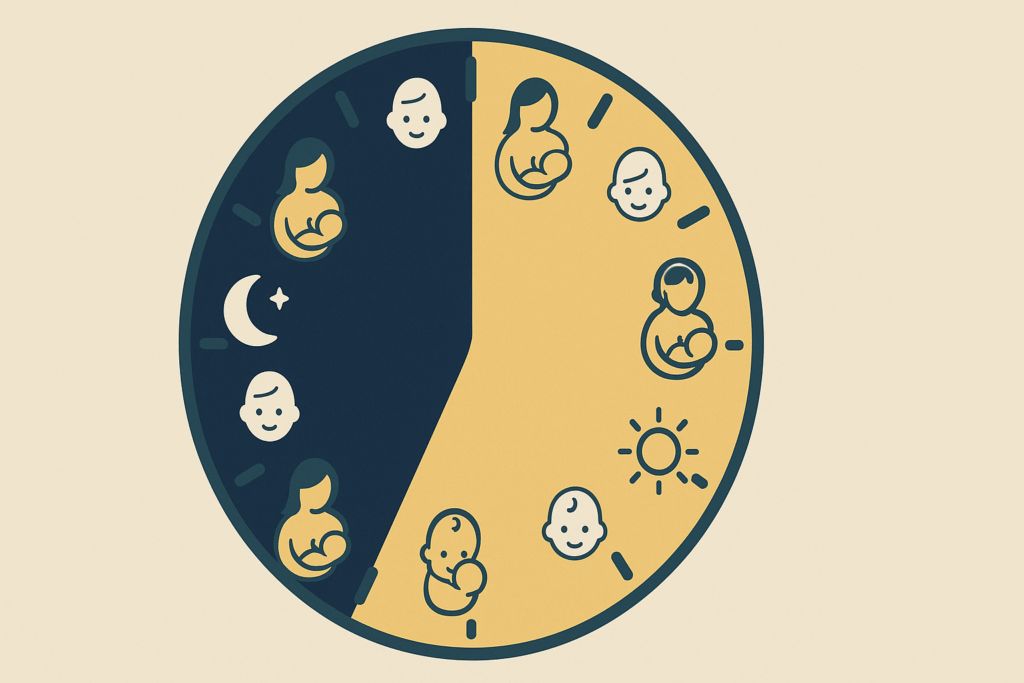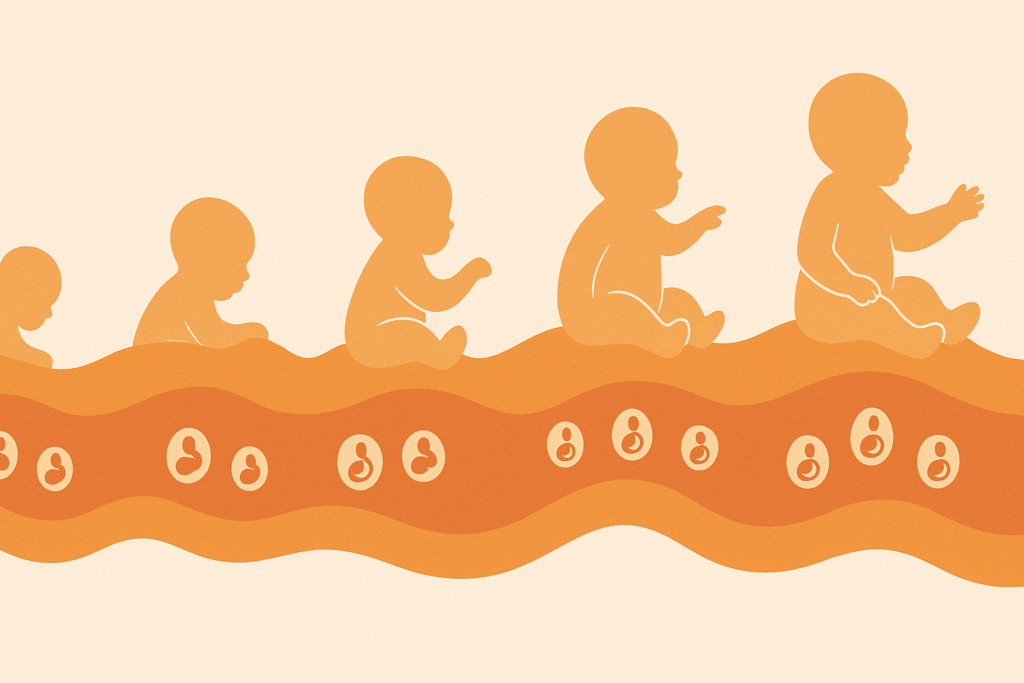Understanding the Foundations of Newborn Nutrition
In the earliest moments of life, nutrition becomes more than just sustenance—it serves as a foundation for growth, immune development, and emotional bonding between caregiver and child. One of the most frequently asked questions by new parents is how long should a newborn nurse, particularly as they navigate the delicate rhythms of feeding, sleep, and development. Breastfeeding, though instinctive, is a learned skill for both mother and infant, and it often requires guidance, patience, and informed decision-making. The duration and frequency of nursing sessions can vary widely depending on the newborn’s age, health status, and individual feeding cues, but understanding what is typical versus what may indicate a concern can empower parents to support their child’s optimal growth from day one.
The early days of infant feeding are dynamic, with fluctuations that are both expected and normal. During the first few weeks, newborns often exhibit unpredictable feeding patterns, such as cluster feeding—a behavior marked by frequent, back-to-back nursing sessions. These patterns can raise questions about supply adequacy, hunger cues, and whether the baby is truly getting enough milk. As infants grow, their nursing durations may shorten, but efficiency increases, meaning they can obtain more milk in less time. Parents may also encounter periods where newborn breastfeeding every hour feels exhausting, leading them to wonder about solutions or potential concerns. This guide explores the physiological, emotional, and developmental aspects of breastfeeding, providing evidence-based answers to essential questions, such as how often should a newborn breastfeed and how long to breastfeed newborn infants to support lifelong health.
You may also like: Essential Milestones in Baby Led Weaning: A Proven Guide to Nurturing Healthy Eating Habits

How Long Should a Newborn Nurse in the First Few Weeks of Life?
The first few weeks after birth represent a critical period for establishing breastfeeding routines. On average, a newborn may nurse anywhere from 10 to 45 minutes per session, typically every two to three hours. However, the answer to how long should a newborn nurse isn’t one-size-fits-all. Newborns have varying sucking strength, alertness, and latching ability, all of which influence how long each feeding session takes. In the first days, colostrum—the nutrient-dense, antibody-rich early milk—is produced in small quantities, so babies may nurse more frequently and for longer periods as they work to stimulate milk production and meet their nutritional needs.
Frequent nursing in this stage also signals the body to establish an adequate milk supply. As such, infant nursing every hour or newborn nursing every hour is not necessarily a cause for concern. In fact, this pattern is biologically driven to promote successful breastfeeding. Parents should be encouraged to watch for signs of effective feeding, including audible swallowing, contentment after nursing, and consistent weight gain. If a baby continues to show signs of hunger immediately after a full feeding or nursing sessions consistently last beyond an hour with little output or satisfaction, consultation with a lactation consultant or pediatrician is advised. Understanding what does cluster feeding look like in newborns and why it happens helps demystify these early feeding behaviors.

Why Do Babies Cluster Feed and What Does It Mean?
Cluster feeding refers to a pattern in which a baby nurses several times over a short period—often every 30 to 60 minutes—for several hours in a row. The cluster feeding meaning is sometimes misunderstood as a sign of insufficient milk, but in reality, it is a natural and healthy behavior, especially during growth spurts or in the evening when babies are seeking comfort. Parents often wonder when do babies cluster feed or when do newborns start cluster feeding, and the answer is typically within the first few weeks of life. Cluster feeding 2 weeks and cluster feeding 3 weeks are especially common, and these sessions help stimulate an increase in milk supply to meet the baby’s growing needs.
Understanding when does cluster feeding start and why it occurs provides reassurance. It’s often triggered by a developmental leap or a natural uptick in the infant’s appetite. These episodes tend to resolve on their own within a few days and do not indicate a problem. However, they can be exhausting, especially for breastfeeding parents, leading many to search for solutions on how to stop cluster feeding or manage it more comfortably. Skin-to-skin contact, nursing in a comfortable position, and hydrating adequately can help support mothers during these intense periods. Recognizing that cluster feeding ages vary, and that behaviors like newborn feeding every hour are temporary, helps reduce anxiety and promotes confidence in the breastfeeding journey.

How Often Should a Newborn Breastfeed Throughout the Day and Night?
Newborns typically need to feed 8 to 12 times per 24-hour period, including both day and night. These frequent feeds are vital for their rapid physical and neurological development. Knowing how often should a newborn breastfeed allows caregivers to create realistic expectations and routines. In the beginning, feeds may occur every 2 to 3 hours, but this frequency can increase during cluster feeding periods, such as during cluster feeding 6 weeks or cluster feeding 8 weeks milestones. It is also common for parents to report that their newborn wants to eat every hour, which can be completely normal depending on the context.
The frequency of feeding is not solely about hunger; it also reflects a baby’s need for comfort, connection, and regulation. Feeding on demand—rather than on a strict schedule—supports the newborn’s metabolic cues and helps establish robust milk production. While it may feel taxing when infant feeding every hour becomes the norm, especially overnight, this pattern typically evolves as the baby matures and becomes more efficient at extracting milk. Parents should observe for signs such as adequate wet diapers, consistent weight gain, and a satisfied demeanor after feedings, rather than focusing strictly on the clock. Over time, babies tend to settle into more predictable rhythms, but early flexibility is key.
How Long Do Newborns Cluster Feed and What Should Parents Expect?
The duration of cluster feeding varies depending on the individual child, but it commonly spans a few days during periods of rapid growth or adjustment. For example, cluster feeding 2 weeks and cluster feeding 3 weeks often coincide with growth spurts, while cluster feeding 4 months may emerge as babies develop more awareness of their surroundings and need comfort to navigate new experiences. During these stages, it is not unusual for a newborn to have multiple nursing sessions within just a few hours, sometimes lasting well into the evening.
When asking how long do newborns cluster feed, it’s helpful to understand that these periods are intense but brief. The heightened demand on the parent’s body and time can be physically and emotionally draining. Strategies such as breastfeeding while lying down, using feeding pillows, and enlisting help with other household tasks can create a more supportive environment. It’s also crucial to recognize that frequent nursing during cluster feeds is not a reflection of milk inadequacy. Instead, it represents a perfectly natural biological pattern that serves both nutritional and emotional functions. Keeping a log of feedings and communicating with a lactation expert can provide reassurance and clarity when patterns become overwhelming.

What Does Cluster Feeding Look Like and How Can You Support It?
Parents often seek to visually or behaviorally identify cluster feeding to differentiate it from other types of fussiness or feeding challenges. So, what does cluster feeding look like? It may include a baby who feeds for 10 minutes, rests for 20, then feeds again—repeating this cycle multiple times. The baby may seem unusually hungry, fussy when removed from the breast, or even unsettled immediately after a full feed. This behavior, although taxing, is developmentally appropriate and usually short-lived.
Supporting cluster feeding requires a blend of practical tools and emotional resilience. Caregivers can benefit from meal prepping in advance, setting up cozy nursing spaces, and hydrating regularly. Mental and emotional support are equally important. Connecting with other breastfeeding parents, either through in-person support groups or online forums, helps normalize the experience and reduces feelings of isolation. While it may be tempting to search for tips on how to stop cluster feeding, it’s generally advisable to lean into the experience and trust the infant’s cues. Cluster feeding plays a crucial role in establishing milk supply and regulating the baby’s needs, especially in the early weeks.
How Long Should I Breastfeed My Baby Each Time During the First Months?
Breastfeeding session lengths can range widely during the early months. A question that often arises is how long should I breastfeed my baby each time, especially as babies grow and develop. In the initial days and weeks, feeds may last 30 to 45 minutes, including breaks for burping or repositioning. As both the parent and baby become more proficient, session durations may decrease to 15 or even 10 minutes, especially once the baby becomes more efficient at nursing.
However, time is not the only indicator of a successful feeding session. Observing active swallowing, rhythmic sucking, and a relaxed body posture are better signs of effective milk transfer. For infants who engage in cluster feeding—such as during cluster feeding 6 weeks or cluster feeding 8 weeks—the duration of individual sessions may fluctuate, with some being longer than others. It’s essential to watch the baby, not the clock. Feeding should end when the baby appears satisfied and releases the breast naturally. Attempting to limit or time nursing may disrupt feeding cues and hinder milk production, especially during periods of rapid development.

When Do Babies Start Cluster Feeding and How Long Does It Last?
Cluster feeding typically starts in the first week of life and recurs at various developmental milestones. Parents often ask when do babies start cluster feeding, and the answer is usually between day 2 and day 5 as the baby transitions from colostrum to mature milk. Another wave may appear around 2 to 3 weeks and again around 6 to 8 weeks, with cluster feeding 4 months marking a common checkpoint associated with cognitive and physical growth spurts. These feeding frenzies can last anywhere from a few hours to several days, depending on the baby’s needs and the caregiver’s response.
Understanding when does cluster feeding happen helps caregivers prepare both mentally and physically. While it may feel like regression or a problem, this pattern supports the baby’s growth and adjusts milk production in real time. Keeping a flexible schedule and accepting these episodes as a normal part of infant development can ease the stress they often bring. Tracking feeding times, ensuring proper latching, and offering the breast frequently are helpful practices during these times. Knowing how to respond to signs that a newborn wants to eat every hour reassures parents that they are nurturing their baby’s health and development.
How Often to Nurse Newborns: Navigating the First Three Months
One of the most pivotal aspects of early infant care is establishing a feeding rhythm that aligns with the baby’s nutritional needs and developmental changes. The question of how often to nurse newborns can seem deceptively simple but becomes nuanced as caregivers begin to navigate hunger cues, growth spurts, and behavioral shifts. In the first month, babies typically nurse every two to three hours, translating to eight to twelve feedings in a 24-hour period. However, during periods like cluster feeding 2 weeks or cluster feeding 3 weeks, this frequency may increase significantly, even to the point of newborn breastfeeding every hour.
By the second month, while some babies continue frequent feedings, others begin spacing them out as their stomach capacity grows and they extract milk more efficiently. Cluster feeding 6 weeks and cluster feeding 8 weeks remain common markers in the feeding timeline. The presence of growth spurts at these stages often drives a temporary increase in feeding demand. It’s important not to mistake increased feeding frequency as a sign of inadequate milk supply. Instead, it should be viewed as a positive indicator of the baby’s growth and evolving energy requirements. Consistent wet diapers, a steady increase in weight, and alert periods of wakefulness offer reliable reassurance that nursing frequency is supporting development appropriately.

Infant Feeding Every Hour: When Is It Normal and When to Seek Help
The experience of infant feeding every hour, while common in early weeks, can be disconcerting for many parents who worry about whether this is a sign of overfeeding, poor milk transfer, or even illness. The key lies in assessing the context and accompanying signs. If a baby is feeding every hour but seems content, gaining weight, and producing adequate wet and dirty diapers, the pattern is likely normal, particularly if they are in a cluster feeding window. This might be especially relevant during phases such as cluster feeding 2 weeks or during growth spurts marked by cluster feeding 4 months.
However, if a baby is feeding frequently yet remains fussy, seems unsatisfied after nursing, or shows poor weight gain, it may indicate an underlying issue such as tongue tie, poor latch, or low milk supply. Newborn nursing every hour accompanied by distressed behavior or inadequate output merits consultation with a lactation professional or pediatrician. Another sign that warrants attention is a baby who consistently falls asleep within minutes of starting a feed but wakes soon after to nurse again, as this could suggest ineffective milk transfer.
Navigating this phase also requires support for the breastfeeding parent. Emotional fatigue, nipple pain, and sleep deprivation are valid concerns and should not be dismissed. Recognizing that frequent feeding can be normal but also has limits encourages caregivers to seek guidance when needed, promoting better outcomes for both parent and child.

How to Stop Cluster Feeding: Gentle Solutions That Support Development
While cluster feeding is a normal biological process, there are instances where caregivers feel overwhelmed and look for ways on how to stop cluster feeding, or at least minimize its impact. It is important to clarify that the goal should not be to eliminate cluster feeding altogether—since it plays a vital developmental and nutritional role—but rather to manage it effectively and make the experience more tolerable for all involved.
One approach includes ensuring optimal latching and positioning to prevent sore nipples and improve milk transfer, which can shorten the duration of each feeding session. Nursing in calm, dimly lit environments can also reduce overstimulation and help babies settle more easily after feeds. For parents juggling other children or responsibilities, using baby carriers for skin-to-skin contact and nursing on the go can offer flexibility without disrupting the infant’s feeding rhythm. Another tip is to implement breast compression during feeds to keep milk flowing actively, reducing frustration and increasing intake efficiency.
Understanding that cluster feeding 6 weeks or cluster feeding 8 weeks typically doesn’t last more than a few days can help caregivers mentally prepare and avoid unnecessary worry. Support from a lactation consultant or breastfeeding support group can also provide emotional reinforcement and offer practical, evidence-based strategies tailored to individual needs.
Why Is My Newborn Eating So Much? Debunking Myths and Understanding Growth
It’s not uncommon for new parents to ask, “Why is my newborn eating so much?” especially when the baby seems to be attached to the breast around the clock. This perception can cause anxiety, particularly for those unfamiliar with the nuances of cluster feeding or newborn development. The truth is that frequent nursing is not only expected but also essential in the early stages of life. Babies double their birth weight by around five months, and this rapid growth requires near-constant nutritional support.
The frequency of feeding is also influenced by the baby’s emotional needs. Nursing provides not only sustenance but also comfort, warmth, and security. This emotional function is especially pronounced during stages marked by cluster feeding ages, such as cluster feeding 2 weeks or cluster feeding 4 months. Separating fact from myth is critical. For instance, the myth that frequent feeding is a sign of low milk supply often leads to unnecessary supplementation or early weaning. On the contrary, regular nursing stimulates milk production and ensures long-term breastfeeding success.
Recognizing these patterns as part of a healthy, adaptive feeding process builds caregiver confidence and enhances the bonding experience. Rather than asking how to stop cluster feeding prematurely, understanding the “why” behind the behavior allows for a more holistic approach to infant care—one grounded in biology, compassion, and science.
How Long Should a Newborn Nurse During Growth Spurts and Sleep Transitions?
Growth spurts are predictable periods when a baby’s physical development accelerates, often triggering increased hunger and feeding frequency. During these phases, it’s common for parents to revisit the question of how long should a newborn nurse, especially when sessions seem to revert to the lengthy, frequent feeds of the early newborn days. Notably, cluster feeding 3 weeks and cluster feeding 6 weeks are well-documented stages where babies experience developmental leaps and temporarily intensify their feeding demands.
Sleep transitions also influence nursing behaviors. Around the fourth month, many babies go through what is commonly referred to as the “four-month sleep regression,” during which they wake more frequently at night and often nurse for comfort as well as nutrition. This coincides with cluster feeding 4 months, making this period particularly challenging for many families. Recognizing that this is a temporary phase and that continued breastfeeding supports not only growth but also emotional regulation and cognitive development is key.
Parents can manage this phase by adapting sleep expectations, planning for more frequent night feeds, and relying on support systems to reduce fatigue. Babies in these transitional stages may nurse for shorter durations but with increased efficiency, meaning that even if frequency rises, the overall time spent may not be significantly higher. Tracking output and growth trends helps ensure that nutritional needs are being met during these periods of heightened demand.
Newborn Wants to Eat Every Hour: Is This Normal or a Red Flag?
When a newborn wants to eat every hour, it can lead to understandable concerns about whether this pattern is a sign of a problem or simply part of the natural ebb and flow of early infant life. In many cases, hourly feeding is entirely normal, especially during cluster feeding phases or the early establishment of milk supply. However, context is critical. If a baby is actively feeding, appears satisfied, and is producing adequate output, then frequent feeding is likely a reflection of their developmental needs rather than a red flag.
Concerns arise when hourly feeding is accompanied by inconsolable crying, poor weight gain, or indications of ineffective milk transfer. In such cases, evaluating latch, milk production, or oral anatomical challenges like tongue-tie becomes important. On the flip side, some babies use the breast for comfort more than nutrition, especially during overstimulation or illness. Differentiating between comfort nursing and hunger cues helps caregivers respond appropriately without assuming a supply issue or introducing unnecessary interventions.
Strategies for managing this include offering both breasts during each feeding, ensuring complete drainage to promote hindmilk intake, and monitoring feeding logs. Frequent feedings may naturally decrease once the baby passes through the cluster feeding ages, stabilizes growth, and becomes more efficient at extracting milk.
Frequently Asked Questions (FAQ) on Newborn Nursing and Cluster Feeding
What Are Some Subtle Signs That Indicate My Baby Is Entering a Cluster Feeding Phase?
While many parents recognize the more obvious cues—such as constant nursing or fussiness—there are subtler early indicators of an upcoming cluster feeding phase. One sign is a shift in sleep-wake cycles, where your baby starts taking shorter naps and seems restless during previously calm periods. You might also notice an increase in rooting behavior, even shortly after a full feed. These changes often precede cluster feeding 3 weeks, cluster feeding 6 weeks, or other key developmental milestones. Another early signal includes clinginess paired with erratic feeding times, where your baby latches, unlatches, and demands comfort without fully settling. Recognizing these nuanced behaviors can help you prepare for intense periods like newborn feeding every hour, allowing you to adjust your schedule and seek support proactively.
How Long Should a Newborn Nurse When Experiencing Growth-Related Fussiness?
It can be challenging to determine how long should a newborn nurse during phases of fussiness linked to growth spurts. Typically, babies feed longer and more frequently during these times, often leading to patterns like newborn nursing every hour or cluster feeding 2 weeks into life. However, the length of each session can vary dramatically—some feeds may last 15 minutes, while others stretch past 45 minutes. The key is to focus less on the clock and more on effectiveness. If your baby is actively sucking, swallowing, and appears relaxed after feeding, the session was likely sufficient. During cluster feeding 8 weeks, some babies may even use nursing primarily for comfort, which is still valuable in promoting neurological development and emotional regulation.
Why Is My Newborn Eating So Much During the Evening Hours?
Many parents report increased feeding demands in the evening, commonly linked to cluster feeding meaning a natural spike in nursing sessions within a condensed time. Evening fussiness may correspond with your baby’s need for comfort after a full day of stimulation. It can also coincide with natural dips in maternal milk supply during late hours, prompting the baby to feed more frequently to boost production. This behavior, often observed around cluster feeding 6 weeks and again at cluster feeding 4 months, is not a cause for concern but an adaptive mechanism that supports milk regulation and growth. To ease this experience, consider switching feeding positions, using skin-to-skin contact, and creating a quiet, dimly lit environment that helps both baby and parent relax.
What Role Does Parental Stress Play in Cluster Feeding Patterns?
Parental stress can significantly influence the feeding dynamic, sometimes intensifying behaviors like newborn wants to eat every hour. Babies are acutely attuned to their caregiver’s emotional state, and elevated cortisol levels can alter the let-down reflex, making feeding less efficient. This feedback loop can increase infant nursing every hour behaviors, particularly during already intense cluster feeding ages. Studies suggest that mindfulness practices, such as controlled breathing during feeding or listening to calming music, can improve both milk flow and emotional bonding. Parents should be encouraged to acknowledge their feelings and seek respite when needed, whether through partner involvement or short periods of self-care. Managing stress isn’t just beneficial for mental health—it directly supports effective breastfeeding rhythms.
How Can I Differentiate Between Normal Cluster Feeding and a Feeding Disorder?
Distinguishing between typical cluster feeding and an underlying feeding issue requires observing patterns over time. Normal cluster feeding tends to occur cyclically—cluster feeding 2 weeks, cluster feeding 3 weeks, and cluster feeding 4 months are common checkpoints—and is usually accompanied by consistent weight gain, contentment after feeds, and a strong latch. In contrast, red flags include minimal weight gain, prolonged feeds without signs of satisfaction, and feeding accompanied by pain or frustration. Persistent newborn breastfeeding every hour without improvement may point to conditions such as tongue-tie or low milk supply. If the behavior extends beyond the typical cluster feeding meaning and disrupts developmental milestones, a consultation with a lactation consultant or pediatrician is recommended.
What Are Some Non-Breastfeeding Techniques to Support Babies During Cluster Feeding?
While breastfeeding remains central during cluster feeding phases, there are complementary practices that can provide comfort and regulate infant behavior. Babywearing is one powerful technique—keeping your baby close in a wrap or sling can reduce crying and mimic the closeness of nursing. Movement, such as rocking or swaying, helps soothe an overstimulated nervous system, especially during cluster feeding 6 weeks when babies become more sensitive to external stimuli. White noise and swaddling can also create a calming environment conducive to comfort between feeds. These strategies help when newborn feeding every hour becomes emotionally or physically draining, giving parents breaks while still meeting their child’s needs. Incorporating such practices creates a holistic approach to navigating intense developmental phases.
How Often Do Newborns Cluster Feed, and Is It Always Linked to Growth Spurts?
While growth spurts remain the most common trigger, the question of how often do newborns cluster feed reveals a broader pattern. Beyond the predictable spurts—cluster feeding 2 weeks, cluster feeding 6 weeks, and cluster feeding 4 months—babies may cluster feed during illness, emotional transitions, or sleep regressions. Some babies exhibit cluster feeding tendencies when facing environmental changes, such as travel, weaning cues, or parental stress. Although the frequency of these episodes may vary, most infants experience cluster feeding several times during the first six months of life. Understanding that cluster feeding isn’t confined to rigid timelines helps parents approach each phase with greater flexibility and empathy, rather than alarm or frustration.
Is There a Natural Way to Gradually End Cluster Feeding Episodes?
Many caregivers want to understand how to stop cluster feeding without disrupting their baby’s development. While it’s important not to suppress natural hunger cues, there are gentle ways to guide babies toward more consistent rhythms. One method includes proactively offering the breast before signs of intense hunger appear, especially during anticipated cluster feeding windows like cluster feeding 8 weeks. Another strategy involves ensuring your baby is getting more hindmilk by encouraging longer feeds on one breast before switching, which can increase satiety. Gentle routines such as pre-feed baths or massages can also promote more effective feeding. These techniques don’t eliminate cluster feeding overnight, but they can reduce intensity and help your baby transition into more predictable patterns over time.
What Does Cluster Feeding Look Like for Breastfed Babies Versus Bottle-Fed Babies?
While cluster feeding is most often discussed in the context of breastfeeding, it can occur with bottle-fed babies too. The main difference lies in the feeding mechanics—bottle-fed babies may drink faster, but still seek the rhythmic comfort of sucking frequently. In these cases, what does cluster feeding look like? You might observe rapid demand for bottles over a short time span, fussiness even after finishing a bottle, and a desire to be held constantly. Bottle-fed infants may benefit from paced feeding techniques, which mimic the flow of breastfeeding and reduce overfeeding. Regardless of feeding method, behaviors like newborn nursing every hour or infant feeding every hour still apply, and caregivers should focus on emotional needs as much as nutritional ones.
When Does Cluster Feeding Start Becoming Less Frequent, and What Signals This Transition?
Most parents look forward to the point when cluster feeding starts to wane. So, when does cluster feeding start to fade? By around four to six months, many babies settle into more predictable feeding routines, especially once solid foods are introduced. However, transitions such as teething, illness, or travel can briefly reignite cluster feeding behaviors. Signals that cluster feeding is tapering include longer intervals between feeds, more efficient nursing, and increased interest in play or exploration. It’s still common to see occasional spikes—such as during cluster feeding 4 months—but overall frequency tends to decline. Maintaining flexible routines and being responsive to your baby’s cues ensures a smooth transition out of these early, high-demand stages while still supporting growth and emotional well-being.

Conclusion: Final Thoughts on How Long Should a Newborn Nurse and Supporting Infant Health Holistically
As we reflect on the central question—how long should a newborn nurse—it becomes evident that the answer lies in embracing variability, trusting biology, and responding to the individual needs of each child. Breastfeeding is not a rigid schedule to be followed but a dynamic relationship that evolves through observation, adaptation, and deepening understanding. From navigating cluster feeding 2 weeks after birth to responding with confidence during cluster feeding 4 months, parents benefit from understanding that frequent, prolonged, and sometimes erratic feeding patterns are entirely normal and often essential for optimal growth and development.
What stands out through the lens of experience and evidence-based guidance is that the duration of nursing sessions should be guided by effectiveness, not the clock. Indicators such as milk transfer, contentment after feeding, and developmental progress are more informative than arbitrary timeframes. Whether you are navigating newborn nursing every hour, wondering how often should a newborn breastfeed during sleep regressions, or facing concerns over how to stop cluster feeding, the most critical tools are knowledge, support, and trust in the process.
The early months of life are foundational for long-term health—not only in terms of physical growth but also cognitive, emotional, and social development. Breastfeeding provides a powerful and adaptable resource to meet these multifaceted needs. With patience, evidence-based strategies, and ongoing support, parents can approach infant nutrition not with anxiety or rigid expectations but with confidence and calm. Recognizing the wide range of normal and supporting each baby’s unique feeding journey is the cornerstone of responsive, informed, and loving care.



